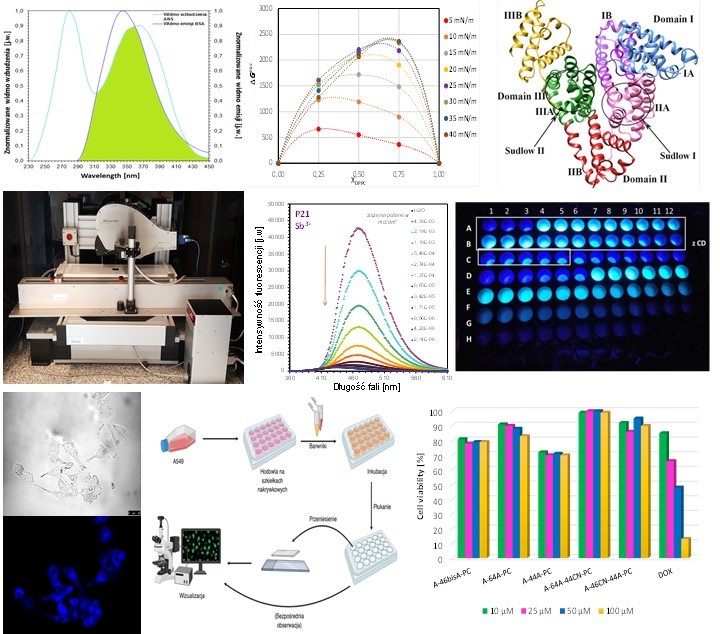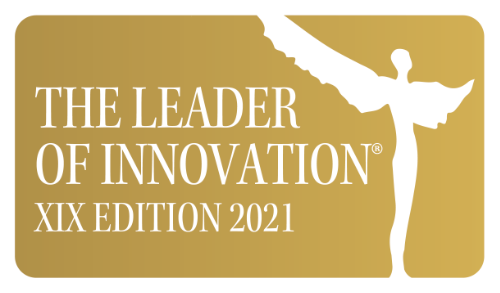Intensive development of photochemistry in recent years in many fields such as molecular biology, medicine, forensic science or polymer chemistry has led to the development of new, fast and precise techniques and methods for monitoring and diagnostics at the molecular level. In recent years, interest in the use of fluorescence methods for medical diagnosis has grown significantly, ensuring detection of compounds present in the studied systems in very low concentrations. In this field also, fluorescence microscopy deserves special attention as a visualization technique that guarantees the possibility to observe desired structures on-line in real time in living cells. This type of microscopic imaging of complex cellular structures is possible by using molecular luminescent or fluorescent sensors. Therefore, in recent years there has been a growing interest in the possibility of constructing new systems for the role of molecular luminescent sensors, which will be safe tools that will provide insight into the world of cellular structures and mechanisms of biological processes at the cellular level allowing detection of ions, small molecules, as well as organic compounds (e.g. bioactive or toxic) and biomolecules.
Our group is engaged in the development of new fluorescent sensors dedicated to the detection of metal ions, bio-molecules and cell visualization. The research includes the design and synthesis stage of the sensors and their spectroscopic characterization. Subsequently, studies are conducted to determine the potential of the obtained compounds for the detection of bio-particles, ions and pH, taking into account potential natural interferents. Our area of activity also includes the investigation of the possibility of application of the developed luminescent sensors for visualization of cellular structures using fluorescence microscopy. At this stage, mechanistic studies aimed at the determination of the penetration of cell membranes are also performed, using for this purpose physicochemical investigations of the interaction of selected sensors with model biological membrane systems in the form of biomimetic monolayers obtained by the Langmuir and Langmiur-Blodgett techniques.

Cracow University of Technology
Faculty of Chemical Engineering and Technology
Laboratory of Photochemistry and Optical Spectroscopy
Warszawska 24
31-155 Cracow
Poland
Joanna Ortyl, Prof., Ph.D., DSc.
tel.: +48 (12) 628 31 36
e-mail: jortyl@pk.edu.pl

Awarded for scientific and research activities that resulted in numerous publications, patents, utility models, invention projects and practical applications and industrial implementations, especially in the field of photochemistry – including photopolymerization processes in polymer systems and photochemical processes taking place in organic molecules. The award is a direct result of the TEAM TECH project co-financed by the Foundation for Polish Science.
Projekt i wdrożenie: Magic Studio